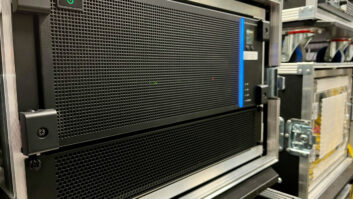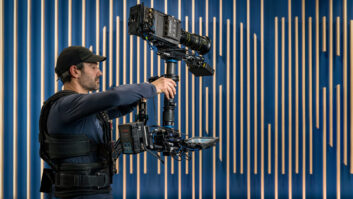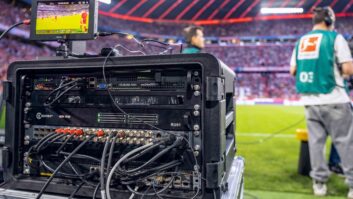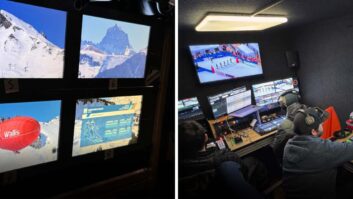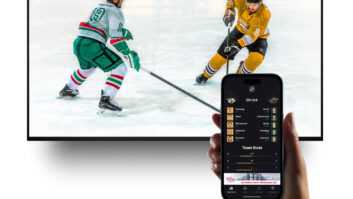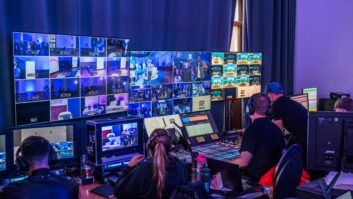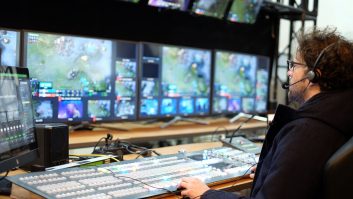Studio Technologies, a world-leading manufacturer of dependable, individualised solutions for broadcast applications, is to introduce the new Live-Link Jr. Remote Camera Interface System at the 2012 NAB Show. Carrying on the successful tradition set by the original Live-Link system, Live-Link Jr. offers a generous feature set coupled with excellent audio quality and a compact form factor optimised for ENG and uplink vehicle applications. Providing everything needed for a single-camera live event, Live-Link Jr. delivers performance flexibility, ease of use and support for high-quality on-air (programme), talent cue (IFB) and intercom audio. Live-Link Jr. is the quintessential video, audio, communications and control data link between a camera operator in the field and a production vehicle (or fixed installation). The system transports one SDI video signal in each direction: camera end-to-truck end and truck end-to-camera end, supporting SD-, HD- and 3G-SDI data signals. All Live-Link Jr. audio and support signals are transported between camera end and truck end units as embedded SDI data. Linked using just two single-mode optical fibers, Live-Link Jr. delivers excellent operational performance regardless of the distance between the camera end and truck end units — whether hundreds of feet or miles apart. The camera end unit allows for remote powering using hybrid fiber/copper cable, 12-volt DC or Anton/Bauer battery or ‘V-Mount’ battery mounts. The truck end unit offers both AC and DC powering capabilities, with a failsafe flip to DC operation if the AC mains go down. The camera end unit offers two mic/line inputs that are compatible with microphone or line-level signals. Related features include adjustable input sensitivity, phantom power and level metering. Each input stage can be independently set for compatibility with line-level signals (0 dB gain) or mic signals (gain of 15, 30 or 45 dB). Two balanced line-level outputs are provided on the truck end unit’s back panel and are associated with the camera end unit’s mic/line inputs. Two additional balanced line-level outputs are also located on the truck end unit’s back panel to provide de-embedded analog signals associated with group 1, channels 1 and 2 of the transported SDI signal. These ‘convenience’ outputs allow audio embedded, for example, by a camera connected to the camera end unit to be accessible without the need for an external de-embedder unit at the truck end. A major strength of Live-Link Jr. is its integrated 2-channel intercom system, which tames the typical hassles and limitations associated with field intercom system implementation. A 2-channel party-line intercom interface is provided on both the camera end and truck end units, allowing beltpacks to be directly connected and powered. A fully functional camera end-to-truck end ‘comms’ system can be up and running in just minutes. Additionally, two line-level audio signals can be transported from the truck end to the camera end via fiber connection, allowing for IFB communications. The balanced line/IFB inputs are located on the back panel of the truck end unit and allow the connection of a variety of analog audio signals, including talent cueing. However, unlike traditional IFB systems, the audio quality can support transporting on-air signals. For flexibility, both line-level and ‘wet’ IFB (power and audio) outputs are provided on the camera end unit. C3747
NAB2012: Studio Technologies launches Live Link Jr. interface
Studio Technologies, a world-leading manufacturer of dependable, individualised solutions for broadcast applications, is to introduce the new Live-Link Jr. Remote Camera Interface System at the 2012 NAB Show.
